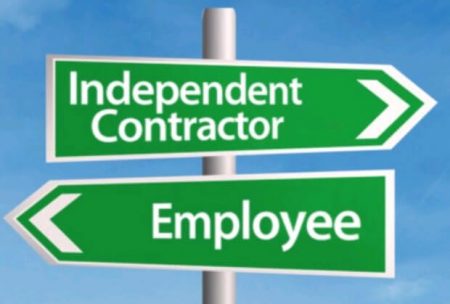Welcome to our Employment E-Bulletin
The law on constructive dismissal has been under the spotlight recently. Sometimes, employees claim constructive dismissal because of a 'last straw' which pushes them over the edge. The courts have recently considered whether a fair disciplinary process – no matter what the outcome – can ever be that 'last straw'.
Ms Kaur was a nurse with Leeds Teaching Hospitals. She received a final written warning for inappropriate behaviour, which included an altercation with another member of staff. She appealed. When her appeal failed, she resigned claiming constructive dismissal. Her claim was based on the whole process, including the altercation and the disciplinary proceedings. She claimed that the 'last straw' was her appeal being rejected.
The Court of Appeal reviewed and clarified the law on 'last straw' constructive dismissal cases. Where there is a course of conduct which creates a serious breach of contract, the most recent act can revive earlier affirmed breaches. If Mrs Kaur had accepted earlier breaches by not resigning at that point, a new breach of contract could revive them.
Theoretically she could bring her constructive dismissal claim.
This case overrules the recent MacKenzie v Pets at Home case. It will be comforting for employers to know that Mrs Kaur's case was struck out for having no reasonable prospects of success. The Court of Appeal confirmed that a fair disciplinary process can never form part of a serious breach of contract. As a result, the appeal decision could not be a 'last straw'.
In this issue:
- GDPR: It's not too late to achieve compliance
- Disciplinary action for high sickness absence
- Whistleblowing - protected disclosures
- Variations of contract
- Employee status and umbrella contracts
- Worker status
- Payslips
- And finally...
GDPR: It's not too late to achieve compliance

The data protection laws implementing the General Data Protection Regulation came into force on 25 May 2018 increasing liability for employers and data processors, and significantly raising the financial stakes for employers.
The maximum level of fines under the GDPR is EUR 20 million or 4% of the total worldwide annual turnover of the undertaking (not the company), whichever is higher. This is a significant increase from the monetary penalty notices of up to £500,000 under the DPA 1998.
In our last issue of e-cite we offered a GDPR-compliant template Data Protection Policy for Employees, Workers and Consultants for £150 plus VAT which was taken up by quite a few of you.
If you have not yet updated your GDPR Policy and would like more information please contact Alison Gair or Robert Cherry.
Disciplinary action for high sickness absence

High sickness absence can place huge pressure on a business. How easy is it to take disciplinary action against a disabled employee for high sickness absence? The Employment Appeal Tribunal has looked at this issue recently in a case where the employee was absent for 60 days in a 12-month period.
Mrs O'Connor had a disability and high sickness absence over many years. Her employer had dealt with the absence sensitively. They had accommodated significantly more absence than their policy usually allowed. But, in 2016, they issued Mrs O'Connor with a written warning and stopped her company sick pay. She brought a claim for discrimination arising from disability under section 15 of the Equality Act 2010. Less favourable treatment under this section can be objectively justified if the employer can show that what they did was a proportionate way of achieving a legitimate aim.
Mrs O'Connor won her discrimination case at tribunal. The employer appealed but the Employment Appeal Tribunal agreed with the tribunal. The employer had the legitimate aims of assuring adequate attendance levels across the workforce and improving Mrs O'Connor's attendance. However, they relied on general assumptions about what a warning might achieve. They didn't look at how it would affect Mrs O'Connor or improve her attendance. No one had spoken to Mrs O'Connor's team manager about the impact of her absence. The employer failed to follow their own policy of referring an employee to occupational health before taking disciplinary action. The warning was not a proportionate way to achieve any of the employer's legitimate aims.
This case is a reminder to employers of the difficulties in dealing with disability related absence. This case succeeded because the employer couldn't justify how the warning would achieve their stated aims. If they had followed their own procedures, and put forward different justification arguments, the outcome may have been different.
Whistleblowing - protected disclosure

Sections 43A-43L of the Employment Rights Act 1996 protect workers who report malpractice (a 'disclosure') by their employer and are then treated badly. For a disclosure to be protected it must contain 'information' which the employee reasonably believes is in the public interest. It must also show some sort of wrongdoing (such as a criminal offence or breach of a legal obligation). Can an allegation be 'information'?
Mrs Kilraine claimed she had made protected disclosures to her employer, the London Borough of Wandsworth. She said she was then treated badly and dismissed. She brought unfair dismissal and detriment claims, based in part on making protected disclosures. The Court of Appeal had to decide whether one of Mrs Kilraine's protected disclosures had been correctly struck out for containing no information.
The Court of Appeal gave helpful guidance on the potential overlap between an allegation and information:
- 'You're breaching health and safety obligations' - these words are too general to be information. They contain no facts;
- 'There are needles all over this ward floor, you're in breach of health and safety obligations' – this is an allegation, but it also contains information (about the needles).
Context is relevant too. If an employee says 'you're breaching health and safety obligations' whilst gesturing to the needles, that combined communication could also be 'information'.
One of Mrs Kilraine's disclosures was just an allegation with no information. It had been correctly struck out. This case may help employers to differentiate between simple allegation and those comments which might qualify as protected disclosures if other parts of the legal test are met.
Visions of contract

How easy is it for an employer to impose a pay freeze? In Abrahall v Nottingham City Council, the Court of Appeal decided that a group of employees had not 'agreed' to a pay freeze when they continued to work without protest afterwards.
In 2011, the Council imposed a two year pay freeze. The recognised unions objected, but did not raise a formal grievance. Two years went by before the Council tried to freeze pay again in 2013.
At that point, employees brought claims for unlawful deduction from wages based on their contractual right to a pay rise.
The Court of Appeal decided that the employees had not accepted the earlier pay freeze. Despite working for two years without protest, the trade union had protested on behalf of employees at the time of the pay freeze. The Court also noted that the employees had continued to work when the contractual change was of no benefit to them. The Court concluded that the employees' actions did not show 'unequivocal acceptance' of the change.
This case shows how complex the process of changing terms and conditions can be. Employers should remember that the safest way is to get an employee's express written agreement to any proposed changes.
Employee status and 'umbrella' contracts

Can an individual employed as 'bank staff', with no guaranteed hours, be an 'employee'? Ms Lane-Angell worked for Hafal assisting vulnerable adults in police detention. Her contract said there were 'no guaranteed hours' and Hafal would use her services 'as and when they are required, if you are available'. Ms Lane-Angell would communicate her availability which was put into a rota. When on the rota she was expected to work if required.
There was a poorly enforced 'three strikes and off' rule where staff were taken off the rota if they missed calls whilst on duty. Ms Lane-Angell missed calls and stopped receiving work. She then claimed unfair dismissal as an employee. But was she an employee?
The employment tribunal said yes. When work was offered to Ms Lane-Angell, she had to accept it or there were potential sanctions. There was an 'umbrella' contract which existed between her and Hafal. An umbrella contract is an overarching contract of employment which spans a series of individual contracts (in this case, the shifts she worked) and links them together. Hafal appealed to the Employment Appeal Tribunal.
The EAT agreed with the employer and said she was not an employee. The tribunal had not properly considered the original contract. The terms were clear that there was no obligation to provide or accept work. The facts showed that the 'three strikes' rule only applied when Ms Lane-Angell was on the rota. The tribunal was wrong to say there was mutuality of obligation during the periods in between shifts when there was no obligation to provide or accept work. Accordingly each break reset the 'continuity of service' clock to zero. There was no umbrella contract and she was not an employee.
This is a good result for the employer, and highlights the importance of having clear terms of engagement with workers.
Worker Status

There has been a lot of publicity lately about the employment status of individuals working in the gig economy. Employees and workers have more rights than the genuinely self-employed, so individuals are pushing for this status. Recently, the Supreme Court gave its decision in the high-profile Pimlico Plumbers case. Can someone be a 'worker' even though their contract says they are self-employed?
Mr Smith worked for Pimlico Plumbers as an engineer. He had a uniform and a branded van. He had to work at least 40 hours per week and pre-book any holiday through the company procedure. However, he paid his own tax and national insurance, used his own tools and paid his own insurance. He could subcontract work only to other Pimlico operatives. He also took some financial risk in relation to fees.
Mr Smith claimed he was pushed out of the business when he asked to reduce his hours after a heart attack. He brought claims for unfair dismissal as an employee and various other claims as a worker, including a disability discrimination claim.
The Supreme Court confirmed that Mr Smith was not an employee, but he was a worker and 'in employment' (as a worker) for the purposes of discrimination law. The company exerted significant control over him, including financial control. He was well integrated into the workforce. His right to subcontract work was too limiting for genuinely self-employed status. He was not running his own business. Mr Smith was a worker and his claims will now be heard by a tribunal.
Payslips

The catchily named Employment Rights Act 1996 (Itemised Pay Statement) (Amendment) (No.2) Order 2018 requires businesses to provide all 'workers' with an itemised pay slip. Previously, only employees were entitled to receive itemised statements. Workers will now have the right to bring an employment tribunal claim if businesses do not comply, and this extension of the right will now mean many people in the gig economy will be entitled to an itemised pay slip.
The new law comes after a recommendation by the Low Pay Commission in 2016 and following the Taylor Review on Modern Working Practices. The change is aimed at ensuring that low paid workers can work out whether they have been paid correctly. The good news for businesses is that the new requirement is not scheduled to come in until April 2019. There is plenty of time to get the necessary systems in place. The change will not apply to wages paid for work done before this date.
And finally...

Chinese companies are reportedly using brain-scanning helmets to keep an eye on their employees' state of mind. The helmets contain an EEG (electroencephalogram) sensor that records brain activity. The helmets are designed to monitor employees' emotional states with the aim of boosting productivity. If employees are feeling sad or stressed then managers will know about it and can act on that information.
Experts think that the technology is flawed and that results are unreliable. There are also major concerns about privacy and whether an employer should be allowed to mind-read their staff. The protections in place for employees are much stricter in the UK than in China so companies are unlikely to apply the same technology here. Besides, do you really want to know what your employees are thinking?



